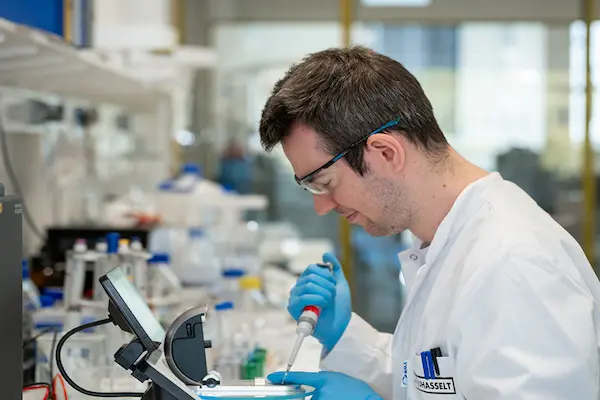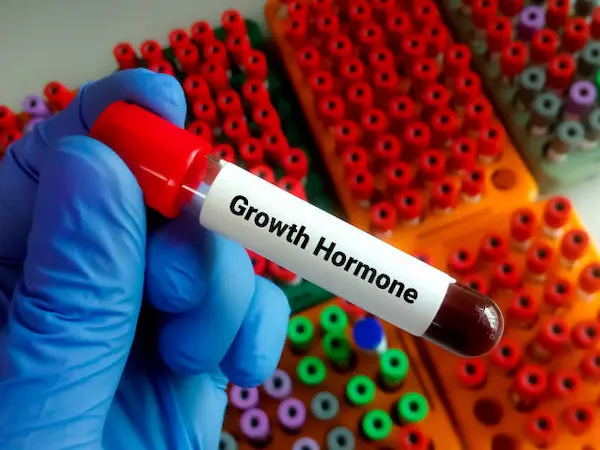
PROMO!
First order? Get 10% OFF with this code: 1storder

In peptide research, few combinations have drawn as much attention as Ipamorelin and CJC-1295. Their ability to mimic and extend natural growth hormone rhythms sets them apart from single-peptide studies. Ipamorelin is often studied for its sharp and selective pulses of growth hormone release. In contrast, CJC-1295 extends the duration of growth hormone and IGF-1 activity, creating a longer window of potential response.
When stacked in controlled studies, this combination shows a balanced profile that draws attention from researchers. Ipamorelin delivers the quick signal, while CJC-1295 helps sustain it. This synergy is why the stack often stands out compared to single-peptide trials.
To reflect different research needs, the combination is available in variations such as the Ipamorelin + CJC DAC stack, designed for sustained release, and the Ipamorelin + CJC No DAC blend, which supports a more natural pulsatile rhythm.
To understand why this stack has become such a focus in research, it helps to begin by looking at how Ipamorelin works on its own.
Discover Ipamorelin from Peptide Works, a selective growth hormone secretagogue studied for its clean, targeted pulses of GH release without raising cortisol or prolactin.

Ipamorelin is studied as a selective growth hormone secretagogue. It works by binding to the ghrelin receptor (GHS-R1a) in the pituitary gland, which signals the release of growth hormone. What makes it stand out is its ability to trigger these pulses without raising cortisol or prolactin, a concern often seen with older secretagogues.
This clean, targeted response gives researchers insight into how growth hormone can be released in short, controlled bursts. These bursts form the “fast-acting” part of the Ipamorelin and CJC stack. The effect is then extended by CJC-1295, which creates a longer-lasting response.
Since CJC-1295 plays a key role in extending this activity, its two variations, DAC and no DAC, are often compared in studies.
Explore CJC-1295 DAC from Peptide Works, a long-acting GHRH analog designed for sustained GH and IGF-1 activity through its extended half-life.
One of the key decisions in peptide research is whether CJC-1295 DAC or No DAC is the better partner in an Ipamorelin and CJC stack. Both versions act differently. The DAC form binds to albumin, giving it a much longer half-life, while the no DAC version clears quickly, producing a sharper but shorter burst.
| Version | Duration | Role in a Stack |
|---|---|---|
| DAC | ~6–8 days | Sustained GH and IGF-1 support |
| No DAC | ~30 minutes (short-acting) | Short GH pulses that mimic natural rhythm |
The no DAC version is often chosen in studies where preserving a natural pulsatile rhythm is important. In contrast, DAC is valued for its convenience and sustained support, as fewer doses can maintain growth hormone activity for longer periods. For this reason, researchers may select either the Ipamorelin + CJC DAC stack or the Ipamorelin + CJC No DAC blend, depending on whether their focus is on sustained coverage or short, natural hormone bursts.
With the differences between DAC and no DAC defined, researchers often turn to the outcomes that make this stack so widely studied.
Check out CJC-1295 No DAC from Peptide Works, a short-acting peptide variant studied for supporting natural pulsatile growth hormone release.
The Ipamorelin and CJC stack is frequently highlighted in peptide research for the way its effects complement one another. Ipamorelin provides a quick burst of activity, while CJC-1295 extends it, creating a more balanced and sustained response.
Researchers often explore this combination in relation to muscle recovery, fat metabolism, sleep quality, and age-related markers of wellness. Each area highlights a different aspect of how the stack may perform in controlled settings.
Among these benefits, recovery and repair stand out as some of the most commonly studied outcomes.
Discover Ipamorelin and CJC-1295 No DAC blends at Peptide Works, and shop a research formulation designed to mimic the body’s natural growth hormone rhythm with short, precise pulses.

Growth hormone has long been linked to tissue repair and protein synthesis, making recovery one of the main areas of interest for this stack. Ipamorelin’s short pulse, combined with the longer effect of CJC-1295, creates a sustained anabolic environment.
This longer window of hormone activity supports ongoing repair, which may help explain why studies have explored the stack’s role in supporting recovery following physical stress.
Because recovery and body composition often go hand in hand, research also looks at how the stack may influence fat metabolism.
Shop Ipamorelin and CJC-1295 DAC stacks at Peptide Works, and discover a research peptide combination that delivers quick GH pulses with extended coverage for sustained hormone activity.
Growth hormone plays an important role in lipolysis, the process by which fat stores are broken down for energy. The stack pairs a quick trigger with extended coverage, creating conditions that researchers have studied in relation to fat metabolism and body composition.
Because of this, research often includes the combination of studies on body composition and weight management.
Since metabolism and energy balance are closely tied to rest, researchers also consider how this stack may influence sleep.

Growth hormone is naturally released during deep sleep, making it central to the body’s ability to recover. By combining Ipamorelin and CJC-1295, researchers have explored how this stack may help maintain restorative phases of rest.
Extended hormone activity offers a longer window for repair processes to take place overnight, which helps explain why this area has been studied in relation to hormone balance and sleep quality.
Because sleep is so closely linked with overall wellness, the stack is also studied in the context of healthy aging.
Healthy aging research often looks at factors like cellular repair, skin elasticity, and energy balance, all areas influenced by growth hormone. Ipamorelin supports short, natural bursts, while CJC-1295 maintains the effect for longer coverage.
Together, they create a release pattern explored in research for its potential associations with markers of vitality, tissue health, and recovery capacity.
This broad range of potential outcomes is what continues to make the stack a central topic in peptide research.
The Ipamorelin and CJC-1295 stack remains an important focus in peptide research because of its complementary effects. Ipamorelin delivers fast, selective pulses of growth hormone, while CJC-1295 extends the response for longer coverage. Together, they create a balanced profile that researchers have studied in relation to recovery, fat metabolism, sleep, and markers of healthy aging.
At Peptide Works, we provide high-quality research peptides to researchers worldwide, including Ipamorelin + CJC DAC stacks and Ipamorelin + CJC No DAC blends.
By offering both DAC and No DAC blends, Peptide Works enables researchers to design studies that capture the unique advantages of each approach, further advancing understanding of growth hormone modulation.
All peptides and compounds mentioned are strictly for research purposes only and not for human use.
[1] Raun K, Hansen BS, Johansen NL, Thøgersen H, et al. Ipamorelin, the first selective growth hormone secretagogue. Eur J Endocrinol. 1998 Nov;139(5):552-61.
[2] Teichman SL, Neale A, Lawrence B, Gagnon C, et al. Prolonged stimulation of growth hormone (GH) and insulin-like growth factor I secretion by CJC-1295, a long-acting analog of GH-releasing hormone, in healthy adults. J Clin Endocrinol Metab. 2006 Mar;91(3):799-805.
[3] Sackmann-Sala L, Ding J, Frohman LA, Kopchick JJ. Activation of the GH/IGF-1 axis by CJC-1295, a long-acting GHRH analog, results in serum protein profile changes in normal adult subjects. Growth Horm IGF Res. 2009 Dec;19(6):471-7.
[4] Kopchick JJ, Berryman DE, Puri V, Lee KY, et al. The effects of growth hormone on adipose tissue: old observations, new mechanisms. Nat Rev Endocrinol. 2020 Mar;16(3):135-146.
[5] Moreno-Reyes R, Kerkhofs M, L’Hermite-Balériaux M, Thorner MO, et al. Evidence against a role for the growth hormone-releasing peptide axis in human slow-wave sleep regulation. Am J Physiol. 1998 May;274(5):E779-84.
ALL CONTENT AND PRODUCT INFORMATION AVAILABLE ON THIS WEBSITE IS FOR EDUCATIONAL PURPOSES ONLY.
DISCLAIMER: These products are intended solely as a research chemical only. This classification allows for their use only for research development and laboratory studies. The information available on our Peptide Works website: https://peptide-works.com/ is provided for educational purposes only. These products are not for human or animal use or consumption in any manner. Handling of these products should be limited to suitably qualified professionals. They are not to be classified as a drug, food, cosmetic, or medicinal product and must not be mislabelled or used as such.
Peptide Works
Related Articles

Could Orexin A peptide Treat Daytime Fatigue?
Waking up tired frustrates many people. Dragging through a full day with heavy eyes and slow focus makes work and

How can the Adamax Peptide help Chronic Inflammation?
Chronic inflammation acts like a fire that never stops burning. It slows recovery, drains energy, and blocks proper tissue repair.

Can Vitamin B12 Immune System Support Enhance the Effects of Thymosin Alpha-1?
The Vitamin B12 immune system link is important because this vitamin plays a crucial role in DNA synthesis, methylation, energy